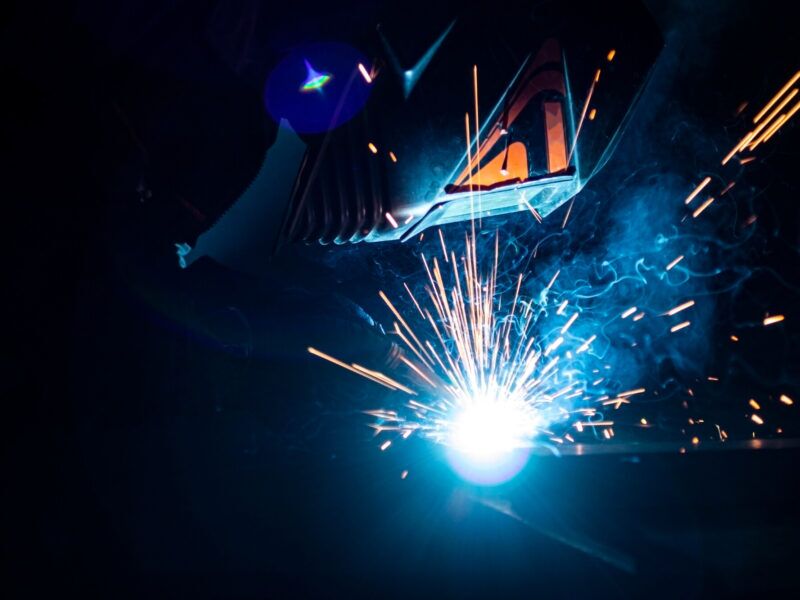Professional Approaches for Preventing Weld Undercut Effectively
Professional Approaches for Preventing Weld Undercut Effectively
Blog Article
Recognizing the Causes and Solutions for Undercut Welding in Steel Fabrication Processes
In the realm of metal construction processes, the event of undercut welding poses a significant difficulty that demands an extensive understanding of its causes and practical services. The complex interplay of various variables during welding operations can result in this undesirable phenomenon, impacting the structural integrity and overall quality of the bonded joints - Preventing weld undercut. By studying the origin of undercut welding and exploring effective therapeutic actions, producers can elevate the standard of their handiwork and make sure the production of flawless steel elements
Typical Sources Of Undercut Welding
Often forgotten in metal fabrication, undercut welding happens due to numerous variables that demand precise interest and experience to be effectively mitigated. Furthermore, incorrect welding methods, such as making use of the wrong welding angle or travel speed, can likewise add to damage development. The selection of welding parameters, such as voltage, current, and wire feed rate, plays a significant role in the event of undercut welding.
Influence of Incorrect Welding Parameters
Inaccurate welding parameters can significantly compromise the honesty and top quality of bonded joints in metal fabrication processes. The impact of inaccurate welding criteria shows up in numerous means, leading to architectural weak points and issues in the bonded elements. One important facet influenced by inappropriate welding specifications is the infiltration depth of the weld. Not enough warmth input because of low welding currents or exceedingly high travel speeds can result in poor combination between the base steels, causing incomplete joint infiltration and deteriorated bonds. On the other hand, excessive warmth input brought on by high welding currents or slow-moving travel speeds can cause excessive and burn-through support, creating a weak and unsteady weld structure. Furthermore, incorrect criteria such as improper voltage setups or inaccurate electrode angles can add to unpredictable weld bead accounts, lack of combination, and increased opportunities of problems like damaging. Careful focus to welding specifications is extremely important to guarantee the manufacturing of top quality welds with the preferred mechanical properties and structural stability.
Effect of Improper Torch Angle
Incorrect lantern angle in welding procedures can substantially affect the high quality and integrity of the final weld joints in steel manufacture procedures. Undercutting is a common welding defect where a groove creates along the weld toe, damaging the joint and endangering its structural integrity.
A torch angle that is too steep can lead to insufficient infiltration, insufficient combination, and increased spatter. On the other hand, a lantern angle that is as well shallow can result in too much infiltration, burn-through, and distortion of the base material. Preventing weld undercut. Proper lantern angle is necessary for making sure consistent weld quality, toughness, and appearance
To avoid undercutting and various other problems caused by inappropriate torch angles, welders have to be trained to maintain the proper lantern angle throughout the welding process. Normal tracking and adjustment of lantern angles throughout welding can assist attain sound welds with marginal flaws.
Role of Inadequate Welding Methods

An additional facet of poor welding strategies is incorrect weld prep work. Insufficient cleaning of the base metals, incorrect joint design, or insufficient side prep work can all add to damage welding. Furthermore, insufficient protecting gas protection or using the wrong kind of gas can lead to incomplete fusion and the formation of undercut issues.
To address the duty of insufficient welding techniques in steel manufacture processes, it is vital to provide thorough training for welders. Appropriate education on welding criteria, joint prep work, and shielding gas option can assist prevent undercut welding and make certain top notch welds in metal manufacture jobs.
Reliable Solutions for Undercut Welding
Attending to undercut welding in metal manufacture needs implementing efficient solutions to boost weld high quality and architectural integrity. Among the primary remedies to fight undercut is to readjust welding parameters such as voltage, existing, and travel rate to ensure correct heat input and combination. By fine-tuning these setups, welders can avoid too much melting of the base metal and filler material, lowering the possibility of undercut development.
Additionally, appropriate joint prep work is essential in protecting against undercut. Guaranteeing tidy base steel surfaces complimentary of impurities and using the proper bevel angle can aid promote much better weld infiltration and lower the risk of undercut - Preventing weld undercut. Utilizing appropriate welding strategies, such as weaving or oscillating the torch, can additionally assist in distributing warm equally and filling the weld joint adequately, decreasing the possibility of undercut special info flaws
In addition, selecting the proper welding consumables, including electrodes and filler metals, is necessary in mitigating click now undercut. Utilizing materials with proper chemical make-ups and mechanical homes can add to attaining sound welds with minimal undercut. Routine assessment and quality assurance steps must also be executed to discover and resolve undercut problems immediately, making certain the overall integrity of fabricated metal components.

Conclusion
In conclusion, understanding the reasons and solutions for undercut welding in metal construction procedures is crucial for achieving high-quality welds. By addressing usual reasons such as inaccurate welding parameters, incorrect torch angle, and inadequate welding methods, welders can prevent undercutting and guarantee strong, long lasting welds. It is necessary to focus on these factors and apply reliable remedies to boost the general welding process and end product quality.

Report this page